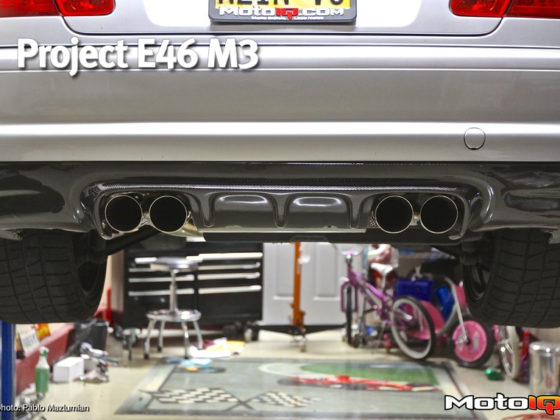,
 For 1986, CART had instituted sweeping rule changes in the name of safety. They mandated much smaller tunnels to greatly reduce downforce, slowing cornering speeds and making the cars more forgiving when they lost traction. The ‘86+ IndyCars all sported larger wings and much lower sidepods than their 1985 brethren. CART also added a large crush section in front of the footbox. This gave more room for a driver’s feet in case of a frontal collision, and also added a deformable structure to help prevent internal injuries as a driver slammed forward in his seat (remember the SAFER barrier and HANS device were still over a decade away). These changes were made after a number of drivers were severely injured in front accidents in the preceding years. While they helped, foot and leg injuries were still prevalent in open wheel racing for many more years.
For 1986, CART had instituted sweeping rule changes in the name of safety. They mandated much smaller tunnels to greatly reduce downforce, slowing cornering speeds and making the cars more forgiving when they lost traction. The ‘86+ IndyCars all sported larger wings and much lower sidepods than their 1985 brethren. CART also added a large crush section in front of the footbox. This gave more room for a driver’s feet in case of a frontal collision, and also added a deformable structure to help prevent internal injuries as a driver slammed forward in his seat (remember the SAFER barrier and HANS device were still over a decade away). These changes were made after a number of drivers were severely injured in front accidents in the preceding years. While they helped, foot and leg injuries were still prevalent in open wheel racing for many more years. While Penske would win again in 1988 (Rick Mears), 1991 (Mears again), and 1993 (Emerson Fittipaldi, left), all in Penske Cars, we skip to the venerable Penske PC-23. While the car itself was great, the engine sitting on a pedestal next to it is what makes this car an absolute legend. See from 1979 to 1995, CART ran the majority of the IndyCar series, but due to political reasons USAC was the sanctioning body of the Indy 500. They mostly shared the same rulebook, but USAC had special engine rules for the 500. We will discuss those more in a minute, but Penske took advantage of those rules in a way that highlighted “the unfair advantage” Penske was known for. Penske entered 3 cars, two of which started in the front row and then went on to dominate the race. Fittipaldi and Al Unser Jr lead all but 5 laps of the race (and those lost laps were only during pit stops) and by the end of the race, defending champ Fittipaldi was a lap ahead of every other car. However, Fittipaldi crashed out while trying to stay ahead of Unser. Unser Jr would go on to win his second 500.
While Penske would win again in 1988 (Rick Mears), 1991 (Mears again), and 1993 (Emerson Fittipaldi, left), all in Penske Cars, we skip to the venerable Penske PC-23. While the car itself was great, the engine sitting on a pedestal next to it is what makes this car an absolute legend. See from 1979 to 1995, CART ran the majority of the IndyCar series, but due to political reasons USAC was the sanctioning body of the Indy 500. They mostly shared the same rulebook, but USAC had special engine rules for the 500. We will discuss those more in a minute, but Penske took advantage of those rules in a way that highlighted “the unfair advantage” Penske was known for. Penske entered 3 cars, two of which started in the front row and then went on to dominate the race. Fittipaldi and Al Unser Jr lead all but 5 laps of the race (and those lost laps were only during pit stops) and by the end of the race, defending champ Fittipaldi was a lap ahead of every other car. However, Fittipaldi crashed out while trying to stay ahead of Unser. Unser Jr would go on to win his second 500. The engine powering the PC23 was the legendary Mercedes Ilmor 500I, AKA The Beast. In an effort to encourage grassroots engine builders to stay in IndyCar, USAC had two different engine configurations. Overhead cam, 4-valve racing only engines were limited to 2.65L of displacement and 22 psi of turbocharger boost, while cam in block, 2-valve engines derived from road car applications could be as large as 3.43L with 27 psi of boost allowed. For over a decade the pushrod engines had to be based off a street car application (the 3.4L Buick and Chevy engines were popular choices for those looking to hotrod an Indy engine). While the added size and boost made for Pole Day terrors, the street origins meant the engines usually scattered their guts before 500 miles was complete. In 1993, USAC quietly removed the road car requirement allowing purpose built engine blocks.
The engine powering the PC23 was the legendary Mercedes Ilmor 500I, AKA The Beast. In an effort to encourage grassroots engine builders to stay in IndyCar, USAC had two different engine configurations. Overhead cam, 4-valve racing only engines were limited to 2.65L of displacement and 22 psi of turbocharger boost, while cam in block, 2-valve engines derived from road car applications could be as large as 3.43L with 27 psi of boost allowed. For over a decade the pushrod engines had to be based off a street car application (the 3.4L Buick and Chevy engines were popular choices for those looking to hotrod an Indy engine). While the added size and boost made for Pole Day terrors, the street origins meant the engines usually scattered their guts before 500 miles was complete. In 1993, USAC quietly removed the road car requirement allowing purpose built engine blocks.  In June of that year, Penske and Ilmor decided to build their own cutting edge pushrod engine, pushing the utter limit of the rules. The story of how they designed and built this engine in 11 months is fascinating and if you’d like to know more, you can do no better than Jade Gurss’ biography of this engine. When all was said and done, the 500I made 300 HP more than its nearest competitor and is one of the few Indy winning engines that can boast a 4-figure power output. The engine was one of the catalysts for the CART/IRL split in 1996. It was also so advanced that it’s only been within the last few years that NASCAR engines have caught up in terms of sophistication.
In June of that year, Penske and Ilmor decided to build their own cutting edge pushrod engine, pushing the utter limit of the rules. The story of how they designed and built this engine in 11 months is fascinating and if you’d like to know more, you can do no better than Jade Gurss’ biography of this engine. When all was said and done, the 500I made 300 HP more than its nearest competitor and is one of the few Indy winning engines that can boast a 4-figure power output. The engine was one of the catalysts for the CART/IRL split in 1996. It was also so advanced that it’s only been within the last few years that NASCAR engines have caught up in terms of sophistication.  One of the most amazing aspects of the 500I engine is that it was no wider or longer than the standard Ilmor engines of the day. Remember, this engine was ONLY eligible for the Indy 500 and since the engine makes up the middle of the car, it would have been extremely expensive to redesign the entire rear of the PC23 to accommodate it. The transmission, floor, and sidepods were unchanged from the standard PC23, a stunning engineering feat. The 500I was taller and required a taller engine cover, but those were the only bodywork changes needed to fit the motor. Notice how much taller the PC23 is than the PC22 in the foreground. The PC23 was a derivative of the already successful PC22, but the PC23 landed Roger his first ever 1-2-3 finish in the championship. It can be argued that the 1994 season was the highlight of Penske Racing. Their in-house car dominated the season, with four podium sweeps. The only race a PC23 finished off the podium was in Michigan (ironic as Penske owned MIS at the time). The PC23 won 12 of 16 races, with Al Jr taking home 8 of those wins. The PC23 also took home 10 poles. If you thought 2016 was a banner year for Penske Racing, 1994 blows it out of the water.
One of the most amazing aspects of the 500I engine is that it was no wider or longer than the standard Ilmor engines of the day. Remember, this engine was ONLY eligible for the Indy 500 and since the engine makes up the middle of the car, it would have been extremely expensive to redesign the entire rear of the PC23 to accommodate it. The transmission, floor, and sidepods were unchanged from the standard PC23, a stunning engineering feat. The 500I was taller and required a taller engine cover, but those were the only bodywork changes needed to fit the motor. Notice how much taller the PC23 is than the PC22 in the foreground. The PC23 was a derivative of the already successful PC22, but the PC23 landed Roger his first ever 1-2-3 finish in the championship. It can be argued that the 1994 season was the highlight of Penske Racing. Their in-house car dominated the season, with four podium sweeps. The only race a PC23 finished off the podium was in Michigan (ironic as Penske owned MIS at the time). The PC23 won 12 of 16 races, with Al Jr taking home 8 of those wins. The PC23 also took home 10 poles. If you thought 2016 was a banner year for Penske Racing, 1994 blows it out of the water.


